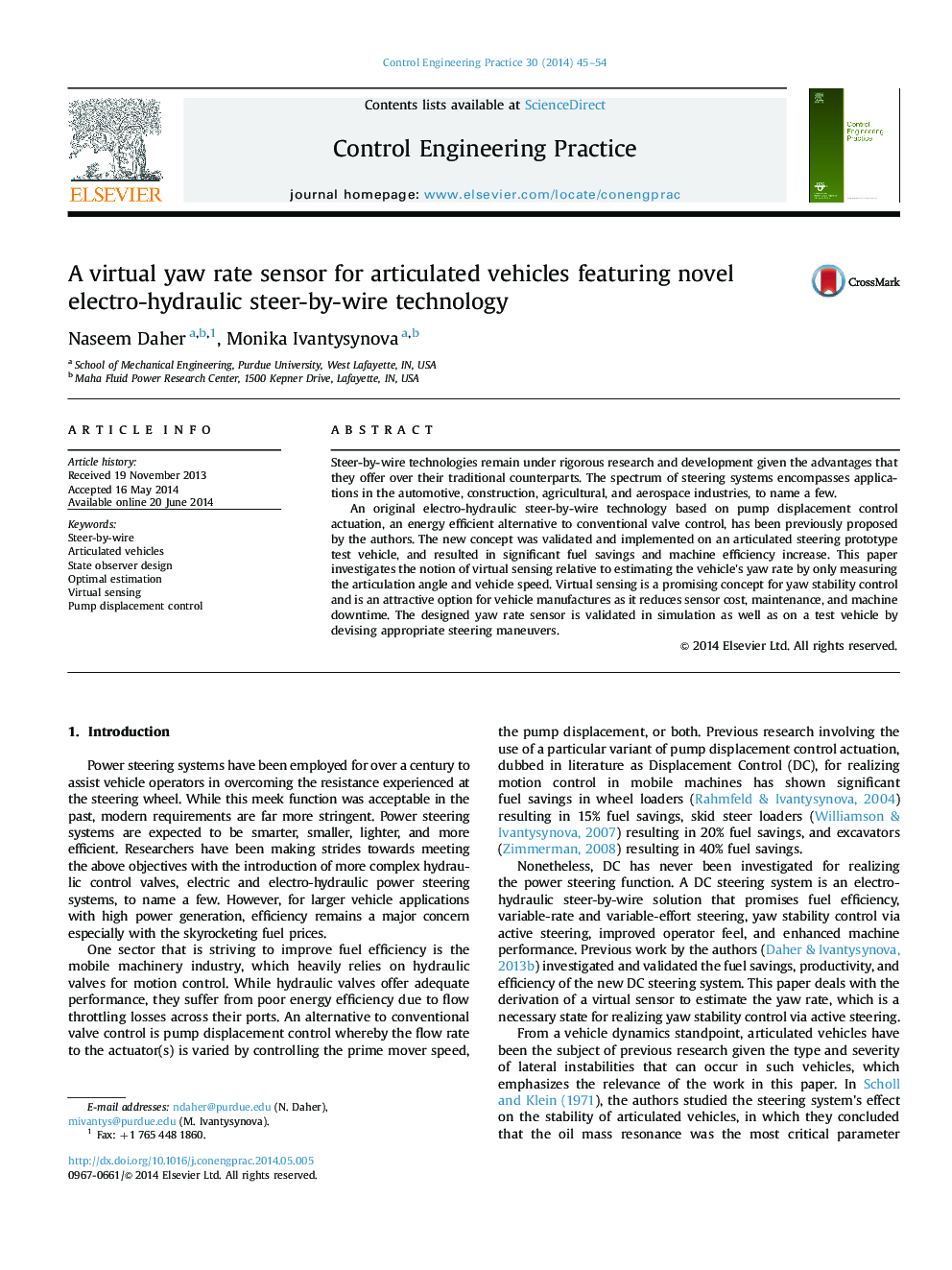| Article ID | Journal | Published Year | Pages | File Type |
|---|---|---|---|---|
| 699600 | Control Engineering Practice | 2014 | 10 Pages |
•A virtual yaw angle rate sensor is developed for an articulated steering vehicle.•Two observers are designed based on pole placement and linear quadratic estimation.•Observer designs are validated in simulation and experimentally on a test vehicle.•Virtual sensor exhibits accurate performance in standard dynamic maneuvers.•Sensor׳s robustness is evaluated and deemed adequate in most conditions.
Steer-by-wire technologies remain under rigorous research and development given the advantages that they offer over their traditional counterparts. The spectrum of steering systems encompasses applications in the automotive, construction, agricultural, and aerospace industries, to name a few.An original electro-hydraulic steer-by-wire technology based on pump displacement control actuation, an energy efficient alternative to conventional valve control, has been previously proposed by the authors. The new concept was validated and implemented on an articulated steering prototype test vehicle, and resulted in significant fuel savings and machine efficiency increase. This paper investigates the notion of virtual sensing relative to estimating the vehicle׳s yaw rate by only measuring the articulation angle and vehicle speed. Virtual sensing is a promising concept for yaw stability control and is an attractive option for vehicle manufactures as it reduces sensor cost, maintenance, and machine downtime. The designed yaw rate sensor is validated in simulation as well as on a test vehicle by devising appropriate steering maneuvers.
Graphical abstractFigure optionsDownload full-size imageDownload as PowerPoint slide
